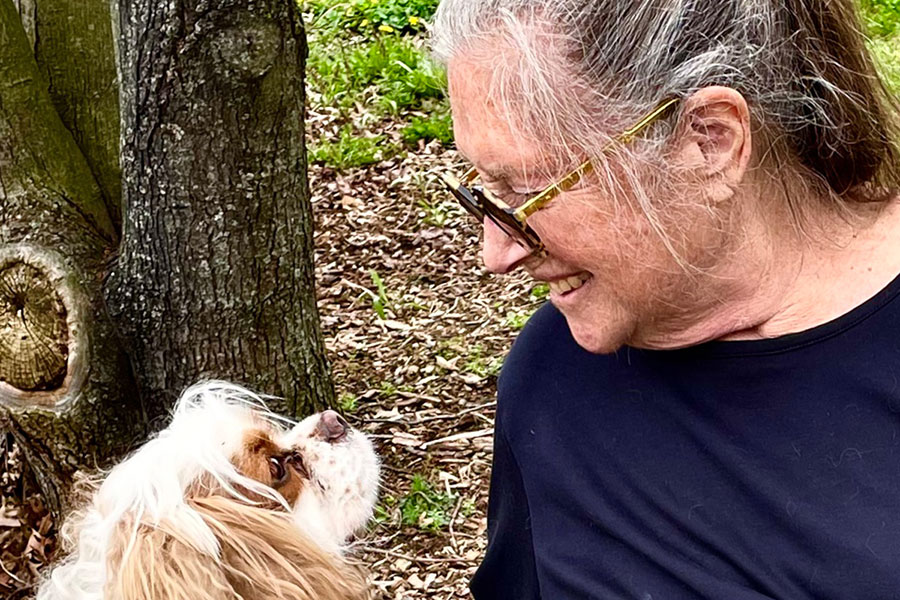At a campaign event in Madison Square Garden shortly before the 2024 election, Donald Trump announced his plans for Robert F. Kennedy Jr.: “I’m going to let him go wild on health. I’m going to let him go wild on the food. I’m going to let him go wild on medicines.” Indeed, many of Kennedy’s past ideas and claims about health and disease can be categorized as “wild.” From 2016 to 2024 he was the chair of Children’s Health Defense, an advocacy group that opposes vaccination and claims that Wi-Fi causes illness. In July 2023 he asserted, “There is no vaccine that is safe and effective.”
Kennedy has associated himself with Andrew Wakefield, a British physician who in 1998 published a paper in The Lancet claiming there was a link between the measles, mumps, and rubella (MMR) vaccine given to children and the development of autism; the paper was later shown to be fraudulent, and The Lancet retracted it in 2010. (Kennedy later was the executive producer on a film that starred Wakefield, Vaxxed II, about purported harm from vaccines.) In his writings and speeches Kennedy has contended that thimerosal, which was used in some past vaccines and contains trace amounts of mercury, leads to autism, despite the fact that thimerosal has never been used in the MMR vaccine and after 2001 was removed from nearly all other vaccines. In 2005, in Rolling Stone and Salon, he published “Deadly Immunity,” an article alleging a government conspiracy to conceal thimerosal’s connection with neurodevelopmental disorders like autism. (Salon retracted the article in 2011 after acknowledging that it was filled with factual errors.)
During an outbreak of measles in California in 2015, Kennedy campaigned against a bill in the state legislature to mandate vaccination in schools, calling the effects of vaccines on children a “holocaust.” (He later apologized for the comparison.) In 2022 he compared vaccine mandates to Nazism. (He once again apologized.)
After his election Trump nominated Kennedy as secretary of health and human services. During his Senate confirmation hearing, he did not go wild. He tempered his long history of opposing vaccination. The Republican chair of the Health, Education, Labor, and Pensions Committee, Bill Cassidy, a physician, appeared frustrated as he pressed Kennedy to unequivocally state that measles and hepatitis B vaccines do not cause autism. While Kennedy pledged to “apologize for any statements that misled people” if shown the “evidence,” he declined to directly acknowledge the existing scientific data refuting his claims. He didn’t say he would outlaw vaccination, but he advocated individual choice rather than mandates in schools. A month and a half after his confirmation, Kennedy hired David Geier, who has promoted repeatedly debunked claims linking vaccines to autism—and who has no medical degree and was disciplined in the state of Maryland for practicing medicine without a license—to research those claims.1
Kennedy has a wild view of infectious diseases. He has speculated that Lyme disease was developed as a military weapon at the Plum Island Animal Disease Center. While running for president, he suggested that the Covid-19 virus was a bioweapon that targeted Caucasians and Blacks and spared most Chinese and Ashkenazi Jews, who were allegedly immune, despite widespread outbreaks in Orthodox Jewish communities in New York. And he has expressed doubts that HIV is the cause of AIDS.
There is currently an outbreak of measles in the United States. At the time of this writing, there are more than seven hundred cases in twenty-four states. The virus apparently took root in the Texas Mennonite community and spread to neighboring states. There have been two confirmed deaths, and several dozen children have been hospitalized. Kennedy, as the head of the Department of Health and Human Services, is in charge of addressing the outbreak.
This is not the first time he has been involved with a measles outbreak. In June 2019 the island of Samoa suffered one that resulted in eighty-three deaths. Two Samoan infants had allegedly died the year before from the MMR vaccine, but it turned out that the vaccines they were given had been improperly prepared. Kennedy had promoted vaccine hesitancy during a visit to the island a few months before the outbreak and has been accused of facilitating the spread of measles there.
Kennedy has made unfounded claims about the current measles outbreak in the US. He attributes the infection to poor nutrition and lack of physical exercise, although the Mennonite community is made up primarily of farmers who eat their own healthy produce and get plenty of exercise in their work. He has recommended the use of cod-liver oil, which contains vitamin A, and steroids, although there’s no scientific proof that either is an effective treatment. Nonetheless his statements are having an impact, as demonstrated by a thriving clinic hawking cod-liver oil that was set up in the area of the outbreak. Kennedy has also proposed prescribing clarithromycin, an antibiotic, as a treatment for measles, although antibiotics have no effect on viruses. All these fictitious therapies undermine the public health measures that are actually effective during an outbreak, specifically high levels of vaccination.
In an interview with Sean Hannity in March, Kennedy made a number of claims about the measles vaccine, all of which are false:
The vaccine wanes about 4.5% per year, so that means older people are essentially unvaccinated…. There are adverse events from the vaccine. It does cause deaths every year. It causes…all the illnesses that measles itself causes, encephalitis and blindness, etc.
A Health and Human Services spokesman, Andrew Nixon, rejected criticism of Kennedy’s views: “Secretary Kennedy is not anti-vaccine; he is pro-safety. His focus has always been on ensuring that vaccines are rigorously tested for efficacy and safety.”2 Yet by spreading misinformation about the safety of vaccines, Kennedy undermines confidence in them.
After attending the funeral in Texas on April 6 for an unvaccinated girl who died of measles, Kennedy wrote on X that “the most effective way to prevent the spread of measles is the MMR vaccine,” but he followed this statement with a post praising two doctors as “extraordinary healers…who have treated and healed some 300 measles-stricken Mennonite children using aerosolized budesonide [a steroid] and clarithromycin.” One of the doctors had promoted steroids as a therapy and described mass infection as “God’s version of measles immunization.” The other was disciplined in the past by Texas regulators for inappropriate use of ineffective treatments.
Kennedy has continued to make contradictory remarks, publicly endorsing the measles vaccine while expressing doubts about its safety. In an interview with CBS News on April 9 he said, “People should get the measles vaccine, but the government should not be mandating those,” yet he went on to say, “We don’t know the risks of many of these products because they’re not safety tested.” He suggested that the girl in Texas may have died of other causes, and according to The Atlantic he told her father, “You don’t know what’s in the vaccine anymore.”
Adam Ratner’s Booster Shots: The Urgent Lessons of Measles and the Uncertain Future of Children’s Health could not be more timely. Ratner is a pediatric infectious diseases specialist at NYU Langone Health. His book is written in accessible language and offers a comprehensive survey of the history, biology, and sociology of measles. It should be required reading not only for Kennedy but for everyone in the Trump administration involved in the national response to infections in children.
Ratner lucidly describes the biology of the measles virus. It has an RNA-based genome and can infect only humans, while other viruses in its family have their own animal hosts. These include the viruses that cause canine distemper (dogs), rinderpest (even-toed ungulates such as cattle), and peste des petits ruminants (goats, sheep, other ruminants, and camels). Scientists have used genomic sequencing techniques to identify the evolutionary relationships among these viruses. The closest relative of measles is rinderpest—the cattle plague virus. The spillover from domesticated cattle to humans likely occurred in the sixth century BCE.
The measles virus is released in airborne droplets of saliva and mucus. It enters people “riding a breath.” Some droplets penetrate deep into the lungs, where they encounter a barrier of cells that normally protects us from pathogens. “There,” Ratner explains, “the measles virus commits its first act of deception against its human host, but certainly not its last.” Like “a key sliding into a lock,” the virus fits into proteins on the surface of the cells and is pulled inside: “Diabolically, viruses repurpose the machinery of ordinary business to enter the inner part of the cell,” turning it into a mass-producer of new viruses that infect other neighboring cells. Over the ensuing days the newly infected cells emerge from the lymph nodes, and the virus is carried in the bloodstream. “From the outside, though, not even a sniffle.” About ten days later the infected person experiences mild symptoms: “a runny nose, a cough, fever, a little redness in the eyes.” These symptoms are not specific to measles and so could be attributed to a typical cold, the flu, or allergies.
It takes about two weeks for the characteristic rash to emerge, first on the head and neck, then on the trunk, arms, and legs. By this time “the measles virus has made billions of copies of itself and has spread to nearly every corner of the child’s body, including a return to the airway.” Thus the child is highly contagious several days before the rash appears:
If a schoolteacher notices a measles rash on a student on a Friday, the virus has likely been spreading within the classroom since at least Tuesday. And spreading is what measles does best. Unless the kids in that class are protected by vaccination or have already had the measles, it is likely that more than 90 percent of them will be infected—twenty-seven or more out of a class of thirty children.
To compare virus contagion, scientists calculate the effective reproduction number, or R. This is the average number of people infected by a contagious person. For example, the initial SARS-CoV-2 strain had an R0 value of about 2.5. Poliovirus is readily transmissible and has an R0 of 5 to 7, similar to smallpox. Ratner terms measles “the king,” with an R0 in the range of 12 to 18. A single child with measles can spread the disease to a dozen or more other children.
Between one and three per thousand infected people die of measles. Children under vaccination age (one year), immunocompromised individuals, and the elderly are most at risk (there are 3.6 million infants too young to be vaccinated in the US). Complications of infection include pneumonia and encephalitis (inflammation of the brain) with neurodevelopmental impairment.
One of the most pernicious sequelae of measles is so-called immune amnesia—it erases our immune system’s memory. This makes us vulnerable to pathogens our bodies should remember how to combat. As a consequence, Ratner writes, “children with measles are more susceptible to pneumonia and other potentially life-threatening infections even after they have recovered from measles.” The period of increased vulnerability is called “the measles shadow” and can last for several years after measles infection: “It is a long, dark shadow.” There is an important difference between natural measles infection and vaccination:
Immune amnesia does not occur in kids who have been vaccinated against measles, meaning that not only does vaccination protect against measles itself, but it protects indirectly against the many other infections that can lurk in the measles shadow.
There is also a sociological paradox, Ratner notes. The success of the vaccine can impair a society’s “collective memory”:
The measles vaccine does not cause immune amnesia—it protects against it—but its success on a population level can, ironically, damage our collective memory. It’s a phenomenon that we see again and again. The better that we get at using the measles vaccine, the lower the case rates go. The lower the rates, the less people think about measles.
And we let our guard down by not mandating vaccination.
The history of measles and vaccination in the West is punctuated by xenophobia and racism. In 1713 measles arrived at the Boston residence of the eminent Puritan minister Cotton Mather. In short order everyone in the household—his wife, Elizabeth, their newborn twins, seven older children, and a servant—fell ill. His wife, the twins, and a two-year-old child all succumbed.
Shortly after their deaths, Mather learned of preventative measures for contagious maladies. He had received an African slave, whom he named Onesimus, as a gift from his congregation. Mather also received reports from England on preventing smallpox with variolation, a precursor to vaccination in which liquid from a pustule is used to scarify a person. Mather asked Onesimus whether he had ever had the disease. Onesimus answered, “Both yes and no.” He
had undergone an Operation, which had given him something of the Small-Pox, & would forever preserve him from it…. He described the Operation to me, and shew’d me in his Arm the scar, which it had left upon him.
Around the same time in Britain, Lady Mary Wortley Montagu traveled to Constantinople with her husband, the ambassador to the Ottoman Empire. She had lost a brother to smallpox and was badly scarred herself. “Shortly after their arrival,” Ratner writes, “Montagu learned of variolation (‘The small-pox, so fatal, and so general amongst us, is here entirely harmless by the invention of ingrafting,’ she wrote to a friend).” She had it performed on her young son, Edward. Back in England, she prevailed upon the Princess of Wales to allow her own children to undergo variolation. Despite the royal imprimatur, the procedure remained controversial in London. In both America and Britain it met forceful resistance from the medical establishment, which dismissed a treatment originating in Africa and Asia.
In So Very Small, Thomas Levenson, a professor of science writing at the Massachusetts Institute of Technology, describes the bigoted opposition Mather and Lady Montagu faced:
Still, at least part of the opposition Mather confronted turned on his source: Onesimus, the African slave, with corroborating testimony by other Black people, augmented by reports of Turkish (not Christian) experimenters. To true believers, nature’s hierarchy was recapitulated as a rigid, immutable ladder ranking humankind from top to bottom. Christians of European descent stood above all other human groups. At the bottom: Mather’s inoculation informants, as [one opponent] wrote…. “There is not a Race of Men on Earth more False, Lyars, etc.”
Levenson concludes, “The lived experience of those consigned to bondage would never outweigh the learning of their masters.”
The measles vaccine was developed in 1961. In 1966 a national eradication campaign was launched to vaccinate one-year-olds and institute school mandates. Ratner argues that the failure to eradicate the disease could be attributed to political forces largely unleashed by Republicans. Federal funding for community immunization programs was halted by the Nixon administration, which blocked legislation aiming to improve the health of children from low-income families. Mandates for measles vaccination at school entry “were unevenly enacted and enforced, in part due to arguments about liberty and in part due to doubts about their effectiveness.” A sociological experiment occurred in the setting of a measles outbreak in the city of Texarkana:
Texarkana straddles the border between the states of Texas and Arkansas. In the 1960s, about two-thirds of the population lived in the part of the city that was in Bowie County, Texas, with the remainder residing in Miller County, Arkansas. The division did not generally affect the day-to-day workings of the city, with residents of both counties attending the same local businesses, churches, and events. However, separate public schools and public health departments were maintained on either side of the state line. Texarkana was a natural laboratory to understand how policy choices could dictate health.
In June 1970 a five-year-old Texarkana boy developed measles. The outbreak lasted some six months and affected more than six hundred people, mostly children: “What made Texarkana different is that State Line Avenue separated two jurisdictions with quite different approaches to measles vaccination.” Specifically, Texas did not require measles vaccination for children beginning school and did not promote mass vaccination campaigns. Thus fewer than 60 percent of one- to nine-year-olds on the Texas side were immune to measles either through vaccination or prior illness. Arkansas, on the other hand, had a school mandate and conducted mass immunization campaigns for preschool- and school-aged children prior to the outbreak. An estimated 95 percent of its one- to nine-year-olds were immune.
This difference in government vaccine mandates determined who fell ill with measles. “Of the 633 Texarkana measles cases, 606 (nearly 96 percent of the total) occurred in people who resided in the Texas portion of the city,” Ratner explains.
This disparity in rates occurred despite significant contact between residents from the two sides. The message was clear—vaccination had protected children who happened to reside on the Arkansas side of town, and community campaigns and school mandates were highly effective in preventing measles spread.
Kennedy would do well to study the outcome of the Texarkana measles outbreak as he fails to endorse mandates for immunization and recommends cod-liver oil and steroids. And the vaccine opponent Grier should pay attention to this natural experiment in his evaluation of the benefits of childhood vaccination.
Despite this forceful example, measles case rates continued to rise dramatically in the 1970s, as first the Nixon and then the Ford administrations underfunded the federal program that provided support for immunization: “Even among states with laws that required children to be immunized against measles and other diseases prior to school entry, monitoring and enforcement remained lackluster.”
More recently, Trump raised the specter of vaccinations causing autism. He told the South Florida Sun Sentinel in 2007, “When I was growing up, autism wasn’t really a factor…. We’ve giving [sic] these massive injections at one time, and I really think it does something to the children.” Ratner notes that Trump had his own child “vaccinated on a nontraditional (and therefore untested) schedule, spacing out the vaccines over a long period of time. He continued to share his theories about vaccines on Twitter.” In 2012 he wrote, “Massive combined inoculations to small children is the cause for big increase in autism.” Two years later he posted, “Autism WAY UP—I believe in vaccinations but not massive, all at once, shots. Too much for small child to handle. Govt. should stop NOW!”
In August 2016, during his election campaign, Trump met with a group of antivaccine advocates, including the discredited Andrew Wakefield:
Though the meeting was not disclosed until after he had won the presidency, Trump was described as “extremely educated” on the issues and reportedly promised the group that he would watch the antivaccine documentary that Wakefield had directed. In an interview with [the health news site] STAT, Wakefield said that he had been pleased to find Trump “extremely interested” and “open-minded on this issue.”
In 2019 there was a measles outbreak in Brooklyn and Rockland County, New York, largely among those who refrained from vaccination. “Nearly 95 percent of the New York City cases were members of the Orthodox Jewish community, and more than 85 percent of those with a known vaccination history had received no doses of measles-containing vaccines,” Ratner writes. He was in the epicenter of the outbreak:
Forty-nine people, overwhelmingly unvaccinated children, required hospitalization, twenty of those, including several children whom I helped care for directly, needed our highest level of care—a pediatric intensive care unit. Anti-vaccine proponents or measles minimizers make much of the fact that there were, thank goodness, no fatalities among the children in this outbreak. That has less to do with measles’s intrinsic propensity to kill and more to do with the presence of medical care, including pediatric ICUs, for those who need it. Had this outbreak gone on much longer, there would almost certainly have been fatal cases in the city. One’s luck can only hold out for so long.
There was sustained resistance to measles vaccination in some quarters of the Orthodox Jewish community. “Many Orthodox mothers who attended their living room meetings did not want to hear from health department officials,” Ratner explains.
When public health agencies talk about putting out culturally guided messaging, that often means involving community or religious leaders. In the case of the New York outbreaks, a letter went out from five hundred Orthodox physicians in support of vaccination. Numerous rabbis provided pro-vaccine messages.
Nonetheless the reluctant Orthodox mothers may have viewed these voices as untrustworthy or irrelevant to their health decisions.
Public health officials and many rabbis were unable to counter the vaccine hesitancy. Ratner shows how a laborious but ultimately successful model of education about vaccination worked: “Blima Marcus, an oncology nurse practitioner from Memorial Sloan Kettering Cancer Center who also happened to be an Orthodox mother living in Borough Park during the outbreak,” was asked
to join a group text chat of about forty mothers, many of whom were hesitant about measles vaccination. She found that misinformation was prevalent within the group…. Marcus addressed their concerns respectfully, calmly, yet firmly, presenting information she had gained from reading scientific studies.
The women in the group chat responded with interest:
But misinformation was still rampant in the Orthodox communities. Marcus joined forces with other members of the Orthodox Jewish Nurses Association to form a task force on vaccines, which eventually became the Engaging in Medical Education with Sensitivity (EMES) Initiative. In Hebrew, the word emes means truth…. EMES members organized small gatherings of Orthodox women in living rooms and classrooms. Their discussions were civil and fact-based; they brought scientific articles and displayed graphs of vaccination rates and autism diagnoses for the attendees to analyze together…. Their points were based on science, with explicit discussion of the impact of decisions on both individuals and members of the community. Progress was hard-won, measured in individual mothers.
In the end, Ratner writes, “the New York City health department was impressed with the successes of EMES meetings and the favorable press response to the organization’s activities.” It requested that EMES produce an abridged version of its publication about the MMR vaccine and distributed nearly 100,000 copies. “The more personal EMES approach,” he concludes, “seemed more effective than governmental proclamations.”
In So Very Small Levenson provides not only the backstory to resistance to variolation but an elegant, wide-ranging history of the discovery of microorganisms and their relation to disease. Antonie van Leeuwenhoek, a seventeenth-century Dutch cloth merchant and accomplished crafter of lenses, reported on tiny wiggly creatures that appeared to occupy every niche of his environment. It took some two centuries to overcome the prevailing beliefs that outbreaks of disease, like the plague, were a punishment for sin spread through the miasma or caused by an imbalance of Galenic humors (phlegm, blood, yellow bile, and black bile). Levenson shows how outbreaks fit within the larger historical setting that culminated in Robert Koch’s germ theory. Koch was able to transmit anthrax, a bacterial infection seen among sheep, from a sick animal to rabbits, demonstrating that germs rather than sins or “environmental corruption” were responsible for such maladies as
B. anthracis and anthrax, V. cholerae and cholera, the White Death brought on by M. tuberculosis, Y. pestis’s globe-spanning plagues, and all the rest. Were a doctor’s hands contaminated with S. pyogenes as they assisted at a birth? Puerperal fever follows. Suffer a wound, even a scratch, and colonies of both streptococcus and staphylococcus can establish themselves in your body, wrecking it from the inside out. Seek pleasure in a house where many have paused before, and in a little while, N. gonorrhoeae will make its presence felt every time you try to pee.
Levenson hails the triumph of vaccines and antibiotics in preventing and treating infectious diseases:
In the first half of the twentieth century, major microbial diseases—cholera and typhus—saw vaccines emerge. From the 1930s forward, a growing tally of viral pathogens were similarly tamed. Yellow fever, the terrifying “yellow jack” of colonialist nightmares, got its jab in 1937. The vaccine for pertussis (whooping cough) followed in 1939. More shots brought more diseases under control with each succeeding decade—perhaps most famously, polio in the 1950s; and then measles, mumps, and rubella by the end of the 1960s…. These last seventy or eighty years form the only time in history in which humans—at least those in reach of adequate healthcare systems—have not had to fear either the most prolific childhood killers or the worst pandemic assassins.
We have not had to fear—until now. In the midst of an outbreak of a contagious disease, it is seductive to believe we can control it with something simple and easily available that the medical establishment has neglected or dismissed. Ivermectin, an antiparasite drug that has demonstrated no benefit against Covid, is still touted by right-wing influencers as an alternative treatment offering miraculous cures. HIV was falsely alleged to be not the primary cause of AIDS but an innocuous fellow traveler as the immune system is degraded by sex and poppers (amyl nitrate). Cod-liver oil is promoted as a prophylactic against measles despite the proven efficacy of vaccination. We are moving into a parallel universe where those who oversee public health want to take us back to a time before Levenson’s iteration of triumphs—the development of antibiotics that combat microbes and vaccines that prevent infection. Outbreaks will go wild, causing much unnecessary suffering and death, if those in power deny the unequivocal advances that have made life for parents and children so much better.
—April 16, 2025


















 English (US) ·
English (US) ·